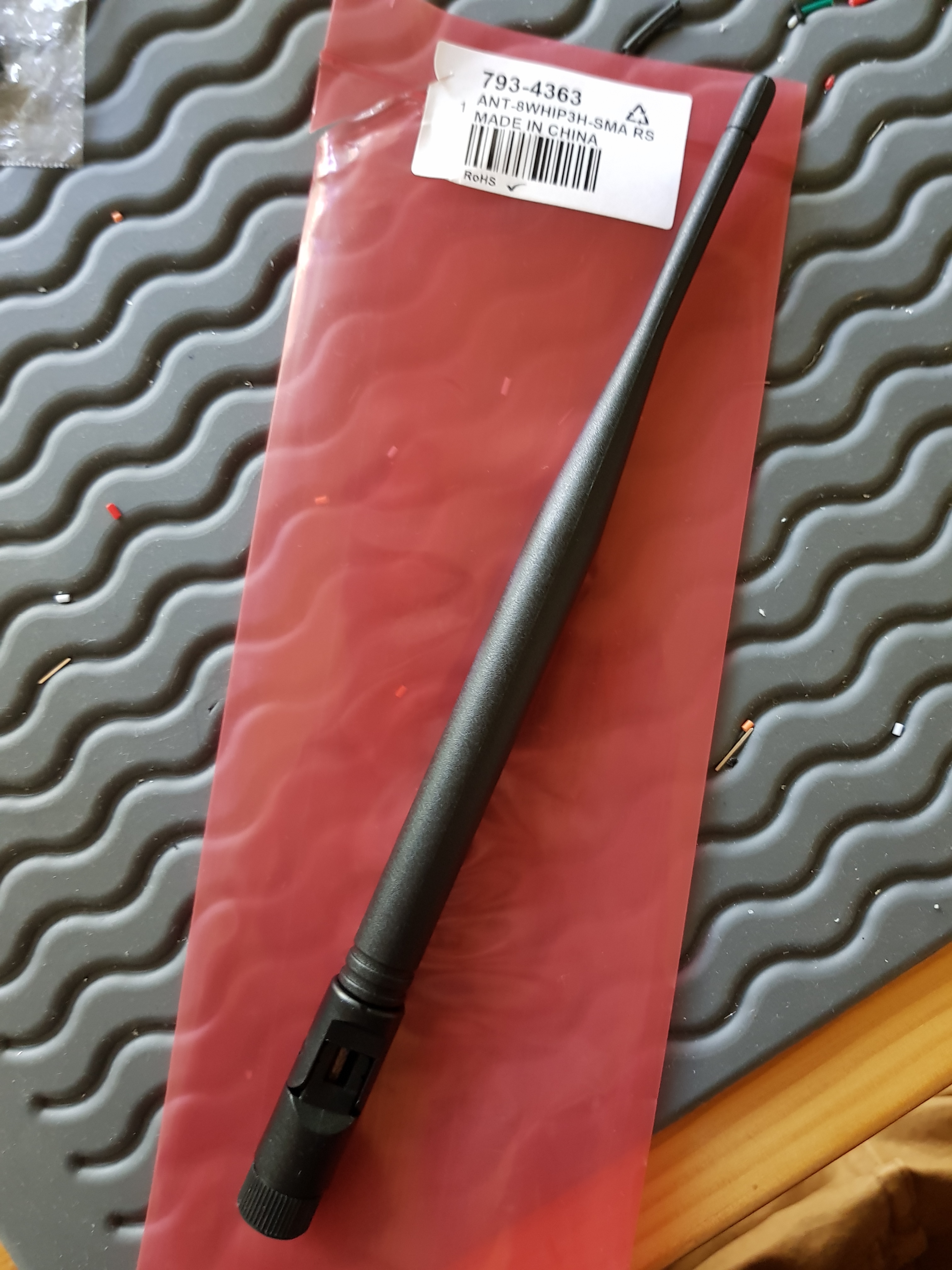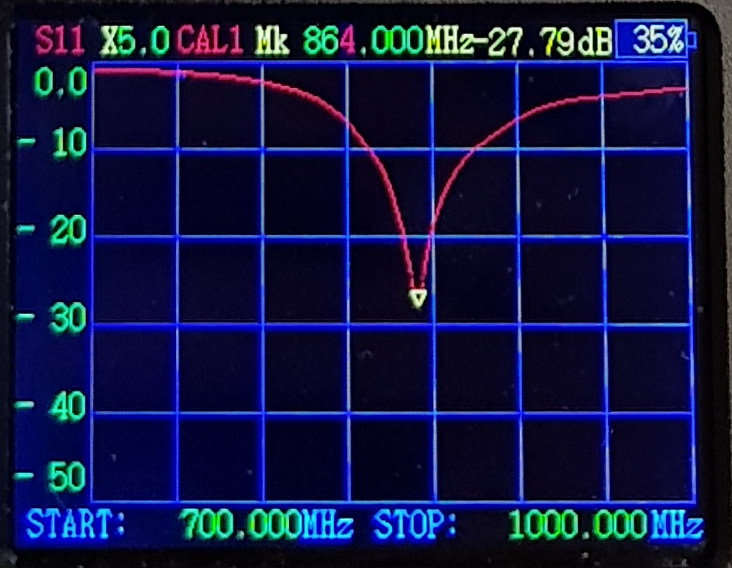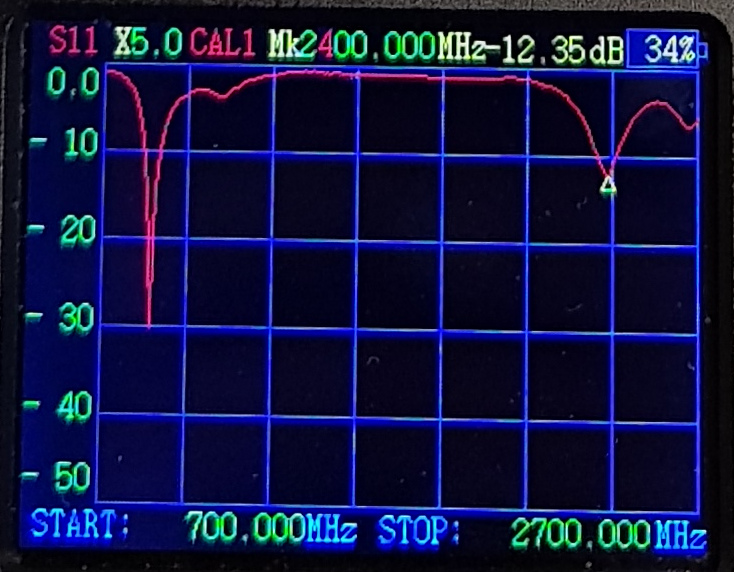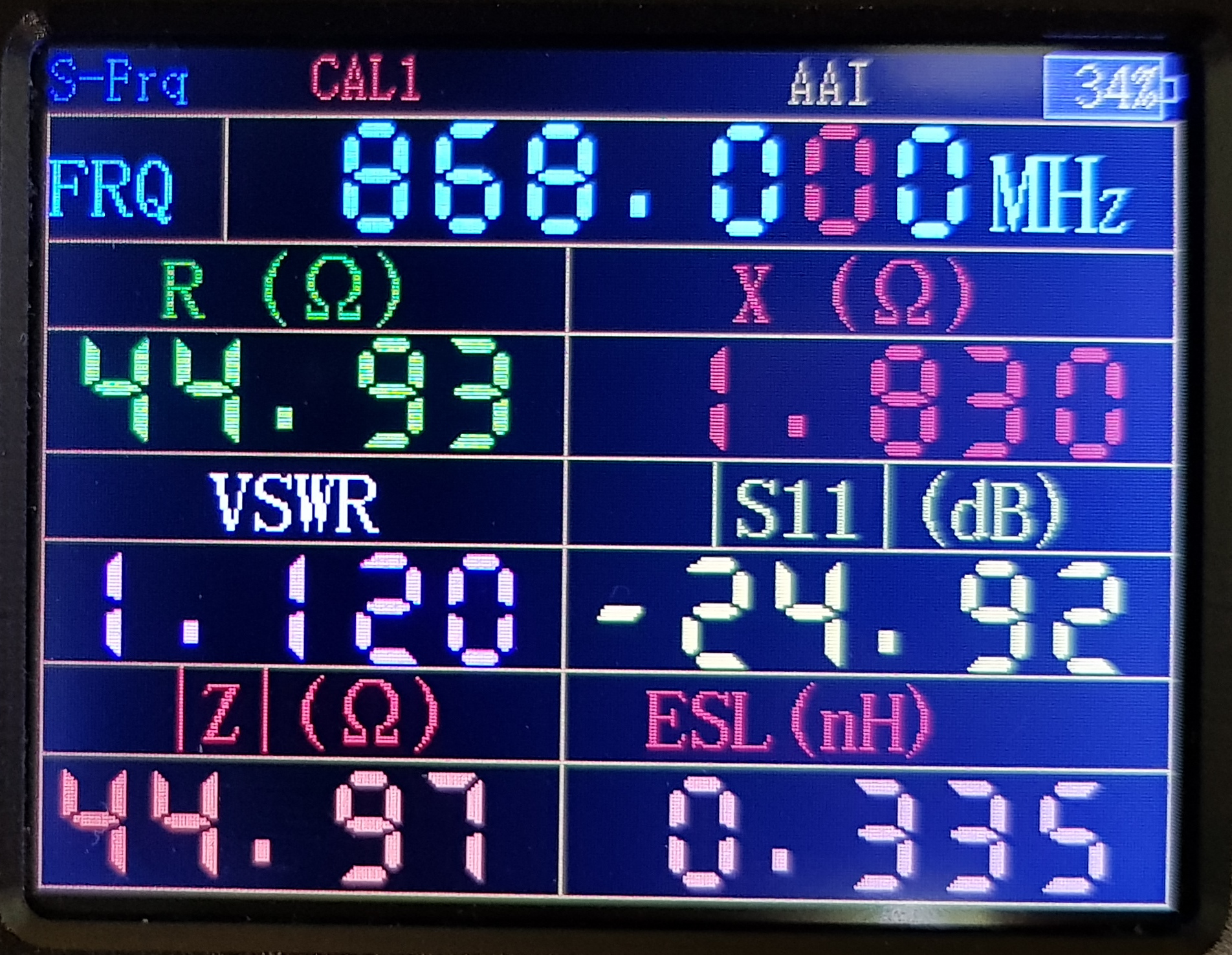Another 868MHz whip antenna from RS Components:
https://za.rs-online.com/web/p/telemetry-antennas/7934363/

This antenna is slightly longer than the rest, looks exactly like the antenna on the Lorank8 gateway, and it is most likely a dipole antenna specifically designed for 868MHz.

This antenna resonates very well at 864MHz with a very deep trough. This trough/valley doesn’t move sideways when bringing your hands closer to the antenna, saying that the antenna is very stable at its resonant frequency.
Zooming out a bit one can see this antenna also resonates at 2.4GHz. Not as well as at 868MHz, but good enough to use this antenna for wifi or bluetooth too.

This antenna has an SWR of 1.12, which is excellent.

Conclusion
This is definitely the best whip antenna for LoRa I have seen. I’d use this antenna on not-so-compact end devices and indoor gateways.